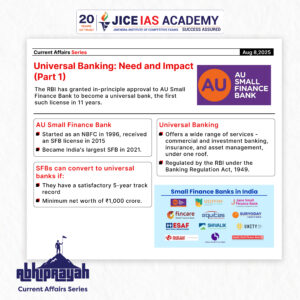UPSC CURRENT AFFAIRS – 29th March 2025
Partial Solar Eclipse 2025

Why in News?
A partial solar eclipse occurred on Saturday, March 29, 2025, visible in parts of the US, Canada, Europe, Russia, and Africa. Although not visible in India, it provides an excellent opportunity to understand astronomical phenomena.
What is a Partial Solar Eclipse?
A solar eclipse takes place when the Moon moves between the Earth and the Sun, blocking the Sun’s light partially or completely, and casting a shadow on Earth. Depending on the degree of alignment between the three celestial bodies — the Sun, Moon, and Earth — different types of eclipses occur.
In the case of a partial solar eclipse:
- The alignment is not perfect, so only a part of the Sun is obscured.
- The Moon’s shadow covers only a portion of the Sun, creating a “crescent” appearance of the Sun at the maximum phase of the eclipse.
- Unlike a total eclipse, the Sun’s corona is not visible, and daylight is not significantly dimmed.
Types of Solar Eclipses
There are four major types of solar eclipses, each depending on the position and distance of the Moon in its orbit:
- Partial Solar Eclipse
- Most common type of eclipse.
- Only a segment of the Sun is covered by the Moon.
- No corona is visible; safe viewing still requires special protection.
- Total Solar Eclipse
- Occurs when the Moon completely covers the Sun, as seen from Earth.
- The Sun’s corona (outer atmosphere) becomes visible.
- Causes dramatic dimming of daylight, resembling twilight.
- Annular Solar Eclipse
- Happens when the Moon is farther from Earth in its elliptical orbit.
- As a result, it appears smaller and doesn’t cover the Sun completely.
- A “ring of fire” or glowing ring of sunlight remains visible around the Moon.
- Hybrid Solar Eclipse
- Rarest type, occurring approximately once every 10 years.
- The eclipse shifts between total and annular depending on the observer’s location on Earth.
- The last hybrid eclipse occurred in April 2023.
How Often Do Solar Eclipses Occur?
- Solar eclipses happen two to five times a year, but not all are visible from the same location.
- Total solar eclipses are rarer — visible from a specific location roughly once every 375 years.
- Solar and lunar eclipses often occur in pairs, separated by about two weeks, due to the Moon’s orbital cycle around the Earth.
Key Terms and Concepts
Umbra
- The darkest part of the Moon’s shadow.
- Observers in the umbra experience a total eclipse.
Corona
- The outermost layer of the Sun’s atmosphere.
- Only visible during a total solar eclipse, appearing as a glowing halo.
Annularity
- Refers to the phase during an annular eclipse when the rim of the Sun remains visible, forming a bright ring.
Pinhole Projector
- A safe, indirect method to observe solar eclipses.
- Made using cardboard, aluminum foil, and paper.
- Projects an image of the Sun through a small hole onto a surface without directly viewing the Sun

3rd UN conference on landlocked countries
UPSC CURRENT AFFAIRS – 08th August 2025 Home / 3rd UN conference on landlocked countries Why in News? At the

Issue of soapstone mining in Uttarakhand’s Bageshwar
UPSC CURRENT AFFAIRS – 08th August 2025 Home / Issue of soapstone mining in Uttarakhand’s Bageshwar Why in News? Unregulated

Groundwater Pollution in India – A Silent Public Health Emergency
UPSC CURRENT AFFAIRS – 08th August 2025 Home / Groundwater Pollution in India – A Silent Public Health Emergency Why

Universal banking- need and impact
UPSC CURRENT AFFAIRS – 08th August 2025 Home / Universal banking- need and impact Why in News? The Reserve Bank

India’s “Goldilocks” Economy: A Critical Appraisal
UPSC CURRENT AFFAIRS – 08th August 2025 Home / India’s “Goldilocks” Economy: A Critical Appraisal Why in News? The Finance

U.S.-India Trade Dispute: Trump’s 50% Tariffs and India’s Oil Imports from Russia
UPSC CURRENT AFFAIRS – 07th August 2025 Home / U.S.-India Trade Dispute: Trump’s 50% Tariffs and India’s Oil Imports from

Eco-Friendly Solution to Teak Pest Crisis: KFRI’s HpNPV Technology
UPSC CURRENT AFFAIRS – 07th August 2025 Home / Eco-Friendly Solution to Teak Pest Crisis: KFRI’s HpNPV Technology Why in

New Species of Non-Venomous Rain Snake Discovered in Mizoram
UPSC CURRENT AFFAIRS – 07th August 2025 Home / New Species of Non-Venomous Rain Snake Discovered in Mizoram Why in


